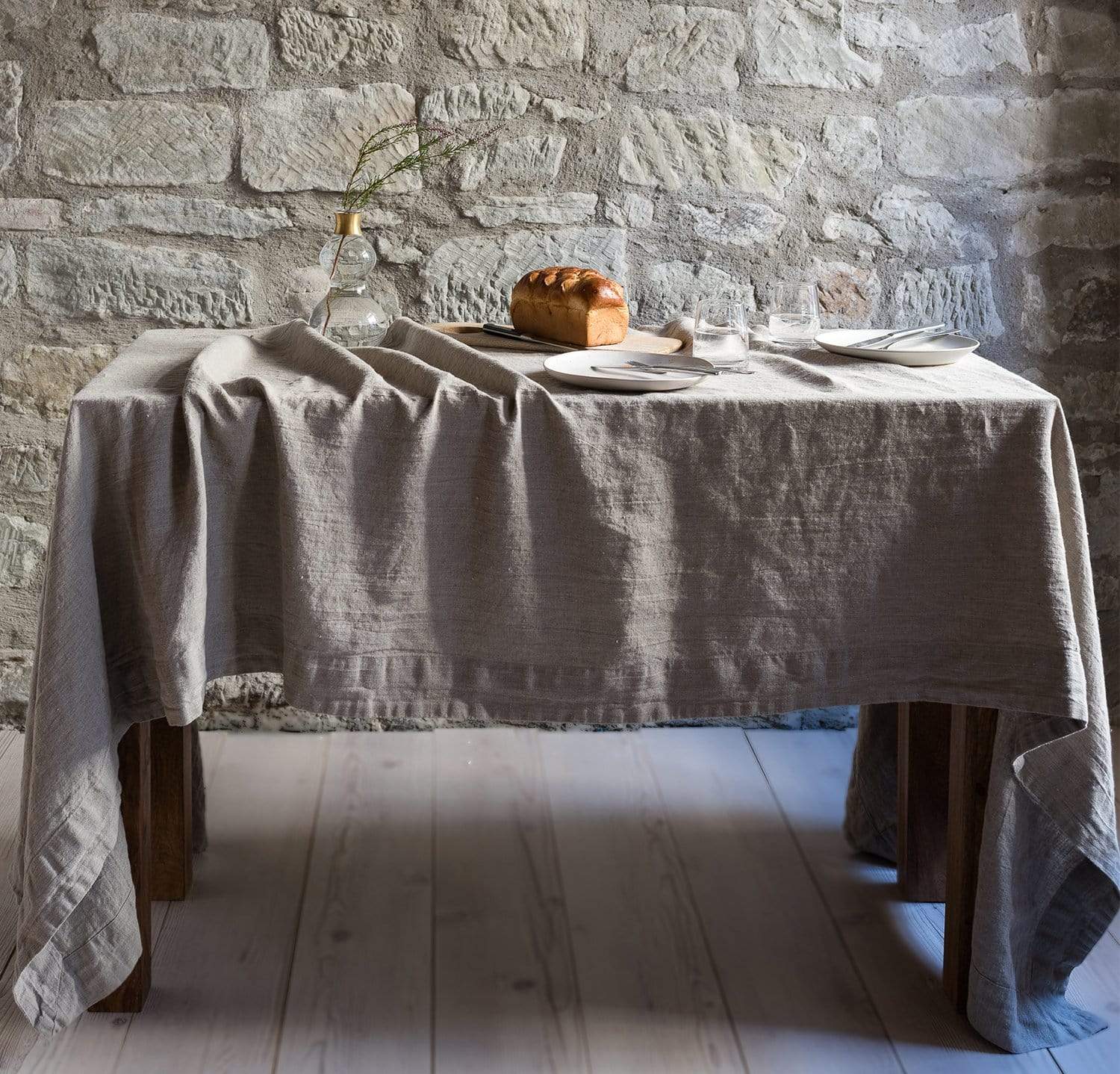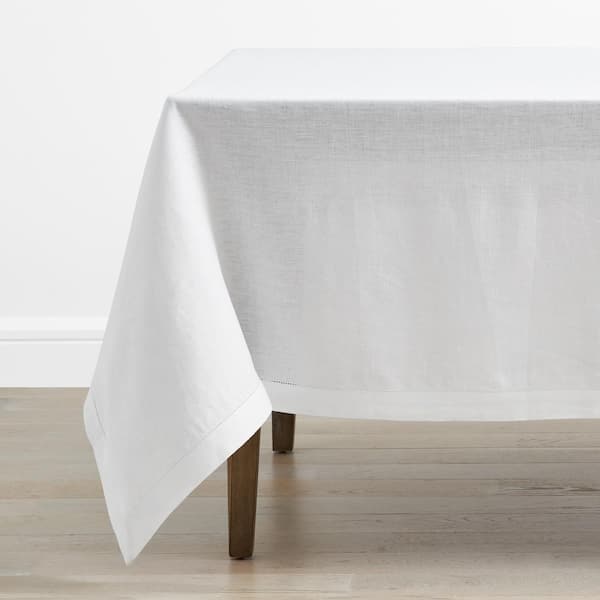Imaginative Table Runner Utilizes: Beyond the Dining Table
Imaginative Table Runner Utilizes: Beyond the Dining Table
Blog Article
Bed Linen Fabric Innovations: Exploring Modern Trends and Creative Applications in Layout and Textile Sector
From sustainable production methods to cutting-edge weaving modern technologies, the evolution of linen is improving the landscape of the fabric industry. As we delve right into the worlds of innovative design applications and the appearance of bed linen blends and hybrid textiles, a new phase unravels in which linen's role in future fabric developments takes facility stage.
Lasting Practices in Linen Production
Sustainable methods in linen production have become increasingly crucial in the textile sector's efforts to minimize ecological effect and promote honest sourcing methods. Bed linen, a natural fiber originated from the flax plant, uses a variety of advantages such as biodegradability, longevity, and breathability. Nevertheless, typical approaches of linen manufacturing can involve substantial water consumption, pesticide usage, and energy-intensive processes.
To attend to these challenges, lots of fabric manufacturers are embracing lasting practices throughout the bed linen production procedure. This consists of sourcing flax from organic ranches that avoid damaging chemicals and chemicals, applying water-efficient retting techniques to essence fibers from the flax stalks, and making use of environmentally friendly dyes and coatings. Additionally, some firms are buying eco-friendly power sources to power their production centers and lowering waste through recycling and upcycling initiatives.
Technological Innovations in Bed Linen Weaving
With the expanding emphasis on sustainable methods in bed linen manufacturing, the fabric industry is now experiencing a rise in technical innovations specifically aimed at transforming the art of linen weaving. These advancements are improving the way linen fabrics are produced, supplying increased effectiveness, high quality, and creative thinking in weaving methods.
One of the essential technological developments in linen weaving is the integration of electronic looms. These sophisticated looms are geared up with software application that enables complex and intricate layouts to be woven with accuracy. By digitizing the weaving process, producers can achieve higher consistency and precision in their bed linen fabrics.
In addition, innovations in thread spinning innovation have made it possible for the production of finer and more durable linen threads - table cloths. This causes softer and smoother bed linen fabrics that retain their top quality even after multiple usages and cleans
In addition, the growth of environment-friendly dyeing processes and surfaces for linen textiles is acquiring traction. These lasting practices not just minimize the ecological impact yet likewise satisfy the increasing customer demand for ethically produced fabrics.
Creative Style Applications for Linen
Ingenious imaginative techniques are significantly shaping the innovative layout applications for bed linen in the textile industry. Bed linen's natural visual allure and ability to mix with various other fabrics make it a preferred selection for creating one-of-a-kind garments and devices that provide to the environmentally mindful customer.
Moreover, designers are explore bed linen in home style, utilizing its long lasting and breathable nature to craft fashionable furnishings such as drapes, bed linens, and upholstery. The texture and drape of linen bring a sense of sophistication and convenience to indoor rooms, adding a touch of beauty to contemporary homes.

Bed Linen Blends and Crossbreed Fabrics
:max_bytes(150000):strip_icc()/sage-teddy_46-7e12be353dfc4e69b1afc52bf5af2820.jpg)
Hybrid fabrics, on the various other hand, take the principle of mixing an action further by integrating added elements such as metallic strings, recycled products, or conductive fibers. These innovative textiles not just expand the layout possibilities yet also introduce practical facets like conductivity, antimicrobial residential or commercial properties, or boosted sturdiness. Crossbreed textiles are progressively being used in different sectors, including style, interior design, and technological fabrics, where the demand for multifunctional materials is on the rise.
Linen's Function in Future Fabric Innovations

In the realm of future fabric advancements, bed linen is anticipated to be a key player in the development of advanced functional fabrics. Researchers and designers are exploring ways to enhance linen's fundamental top qualities via technical advancements, such as incorporating smart textiles, nanotechnology, and performance surfaces. These innovations aim to boost linen's efficiency characteristics, making it ideal for a broader variety of applications, from activewear to safety apparel.
In addition, the mix of directory bed linen with various other natural or artificial fibers opens countless possibilities for producing unique fabrics with unique residential properties and performances. By click reference leveraging bed linen's qualities and checking out innovative blends, the textile sector is poised to present amazing advancements that satisfy evolving consumer requirements and sustainability requirements.
Final Thought
Finally, the expedition of sustainable practices, technical advancements, imaginative layout applications, linen blends, and its role in future fabric advancements highlight the constant evolution of bed linen fabric in the modern-day style and textile sector. With a concentrate on development and creative thinking, the convenience and eco-friendly nature of linen make it an important product for suppliers and developers alike, leading the way for further growths and developments in the area of textiles.
As we delve into the worlds of innovative layout applications and the introduction of linen blends and hybrid materials, a new chapter unfolds in which bed linen's role in future fabric innovations takes center stage.
Checking out the blend of linen with various other textiles has actually led to the introduction of ingenious blends and crossbreed textiles in the modern fabric market. Linen blends use an unique combination of the features of bed linen with those of various other fibers, resulting in fabrics that possess enhanced residential or commercial properties such as increased resilience, boosted draping, and minimized wrinkling.The development of bed linen blends and hybrid materials has actually established the phase for Linen to play a crucial function in driving future textile innovations.In the realm of future textile innovations, bed linen is expected to be an essential player in the advancement of innovative functional textiles.
Report this page